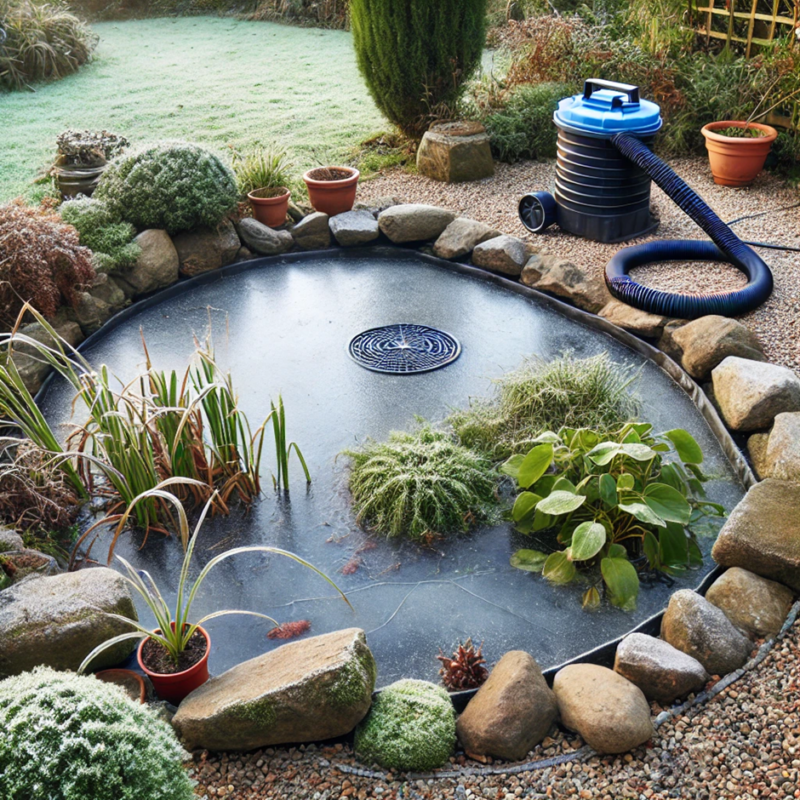As temperatures drop, preparing your pond for winter ensures that fish, plants, and equipment are protected through the colder months. With a few seasonal adjustments, you can maintain a healthy pond environment, preventing issues like ice buildup and poor water quality. Follow this winterization guide to keep your pond in top condition.
Clean Out Debris and Fallen Leaves
Before winter fully sets in, remove any organic debris, including fallen leaves and decaying plant matter, from the pond. Debris contributes to nutrient buildup and increases the risk of algae growth in spring. Using a pond vacuum can help you clear out hard-to-reach areas and keep the water pristine.
Reduce Feeding and Adjust Fish Car
Fish activity slows in colder water, so reduce their feeding accordingly. As temperatures fall below 10°C, koi and other pond fish stop feeding entirely. To prevent waste buildup, only feed them what they’ll eat in a few minutes. Refer to our Winter Feeding Guide for more specific recommendations.
Switch to Cold-Weather Equipment
If your pond has submersible equipment, consider switching to cold-weather alternatives. Installing a pond heater or floating de-icer can help keep a small area ice-free, allowing oxygen exchange and preventing gas buildup. You can also consider using an air pump to enhance oxygen levels during winter, especially if you have a high fish population.
Cut Back and Remove Sensitive Plants
Hardy aquatic plants can generally survive colder months, but it’s best to cut back or remove delicate species that might not survive freezing conditions. Trim any yellowing leaves to prevent them from decaying in the water. For plant care through winter, consider treatments from the OASE Lake Therapy range to help plants transition safely through the season.
Check and Maintain Filtration Systems
Maintaining proper filtration is essential during winter to keep water clean and stable. Switch to a winter-appropriate setting or consider adding a smaller filter for reduced flow. For ponds with large filtration needs, lake filtration systems can offer strong performance even in colder months.
With these winterization steps, your pond will be better prepared to weather the cold season, allowing it to stay healthy and ready to flourish again in spring.








